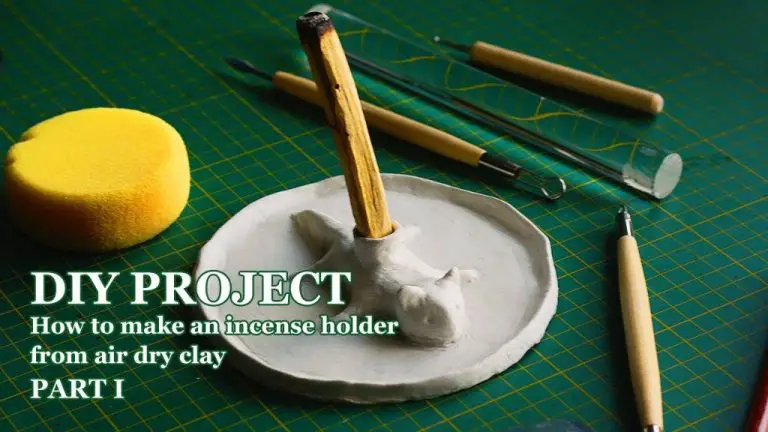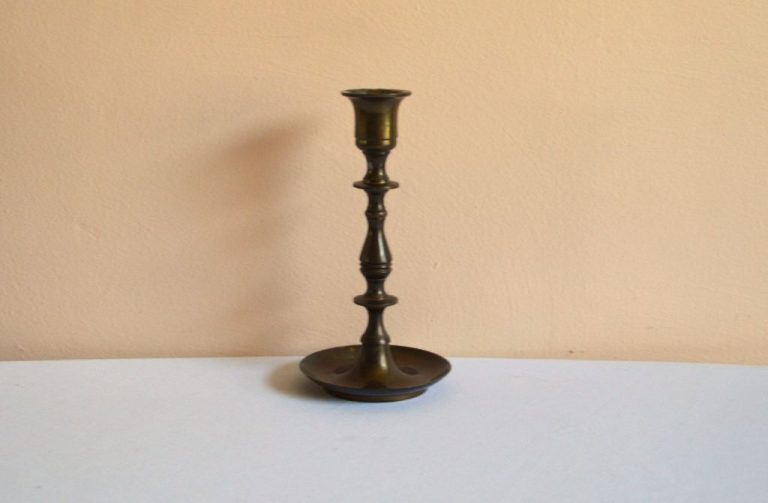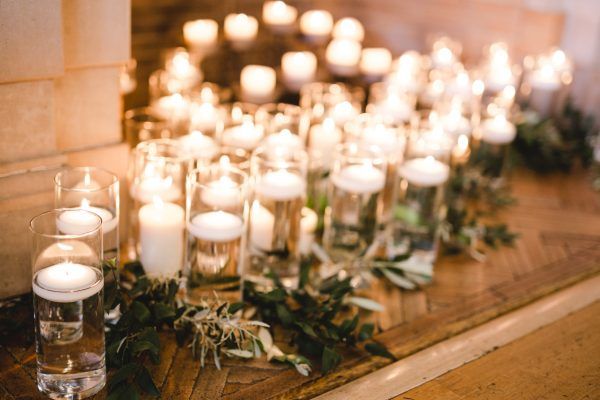How Do You Make Woodwick Candles Crackle?
What Are Woodwick Candles?
Woodwick candles are a special type of candle that crackles while burning. The distinctive crackling sound comes from the unique wood wick inside the candle. Unlike regular cotton or paper wicks, Woodwick wicks contain wood fibers that create a pleasant crackling noise resembling a cozy fireplace.
Woodwick candles were first developed in the early 1900s by Craig and Kathy Marshall in South Carolina. While experimenting with candle wicks using different materials like wood chips, pine needles, and twisted paper, they discovered that wicks containing wood fibers produced a natural crackling sound when burned. This provided sensory ambiance reminiscent of a wood-burning fireplace.
Today, Woodwick candles are manufactured using a secret process to embed natural hardwoods like cedar, oak, and bamboo within the cotton cord wick. When the wick burns down, the wood fibers pop and spark, amplifying the cozy crackling sound. The proprietary wood wick allows Woodwick candles to create a unique crackling fire sound that other candles can’t replicate.
In addition to the trademarked wood wicks, Woodwick candles use top-quality waxes and luxurious scents to provide an optimal candle experience. The woodsy crackling noise combined with aroma-therapeutic fragrances creates a comforting ambiance that many Woodwick fans enjoy and find soothing.
How Woodwick Candles Create Crackling Sounds
The key to the distinctive crackling sound of Woodwick candles is the unique wooden wick at the center. This wood core is made from natural hardwoods like bamboo. As the candle burns down, the flame heats the wood wick, causing the wood fibers to expand and contract. This rapid expansion and contraction creates tiny explosions that result in the characteristic crackling, popping sound.
The natural wood grain in each wick creates random areas that are more dense. These denser areas heat and expand at different rates, resulting in a natural wood-fire like crackling. The unique wood composition, grain, and density of each wick ensures no two will ever crackle exactly the same.
Unlike regular cotton or paper wicks, the wood core provides a three-dimensional fuel source for the flame as the candle burns down. This allows more wax to melt at the tip and soak into the wood fibers, contributing to the mini explosions that create the beloved sounds.
Wick Types That Produce Crackling
Woodwick candles get their signature crackling sound from the wooden wicks used in them. There are a few different types of wicks that can produce the crackling effect:
Wooden Wicks – These are wicks that have a wood core, usually made from natural woods like bamboo. The wood core allows the wick to crackle and pop as it burns. Wooden wicks come in different shapes like square, round, and flat to produce different crackling sounds.
Wood Pulp Wicks – These wicks are made by mixing wood pulp with cotton to create a textured wick that crackles as it burns. The wood fibers embedded in the wick produce the familiar crackling noises.
Waxed Wood Wicks – These specialty wicks have an extra layer of wax coating the wood core to help amplify the crackling sound. The thicker wax layer causes more popping and cracking as it melts during burning.
Coreless Wicks – Though not technically wood wicks, these all-cotton wicks are tightly braided or twisted to create air pockets that crackle while the candle burns. The hollow construction causes the wick to crackle without a wood core.
Ideal Wax Types and Textures
The wax blend used in Woodwick candles can significantly impact the intensity and consistency of the crackling sound. The ideal wax has the right balance of hardness and pliability to maximize the wood wick’s natural crackling properties.
Candle waxes like paraffin, soy, and beeswax all have different properties that lend themselves to crackling:
- Paraffin wax on its own can be too soft, resulting in muted crackling. But blended with other waxes, paraffin can create an ideal canvas for wood wicks.
- Soy wax is harder and brittle when cooled, allowing the wick to flex and crackle freely. The natural brittleness of soy wax makes it a common blend for crackling candles.
- Beeswax is very pliable, so it must be blended with other waxes for an optimal crackling effect. A touch of beeswax helps strengthen the wax blend.
- Palm wax adds hardness and opacity that brings out the wood wick’s crackling sound. Palm wax blended with soy or paraffin is ideal for Woodwick candles.
The goal is a wax that cools to a solid yet flexible texture, giving the wood wick room to flex and crackle. Test different wax blends to find the right balance of hardness and pliability for maximum crackling potential.
Wick Trimming for Optimal Crackling
Proper wick trimming is key to producing the satisfying crackling sound Woodwick candles are known for. Here are some tips for trimming your wicks to maximize crackling:
- Trim wicks to 1⁄4 inch before lighting. Long wicks can cause sooting and irregular burning. A 1⁄4 inch wick is ideal for even melting and full crackling sounds.
- Use sharp wick trimmers each time you trim. Dull trimmers can crush the wick instead of cutting it cleanly, reducing crackling performance.
- Trim wicks just above the melted wax before each burn. This ensures an optimal 1⁄4 inch wick length for crackling.
- Avoid leaving wick trimmings in the wax pool. Remove all loose trimmings before lighting to prevent clogging issues.
- Trim any mushrooming at the tip of the wick. Mushrooming can disrupt the crackling effect.
- Trim perpendicular to the wick, not on an angle. Straight cuts allow for the most even burn.
- In large candles, trim wicks in a spiral pattern. This helps the wax pool melt more evenly for better performance.
With the right trimming techniques, you can enjoy consistent, rich crackling sounds from your Woodwick candles. Trim wicks regularly and remove all loose trimmings before lighting for candle experiences that delight the senses.
Ideal Candle Container Materials
The material of the candle container can significantly impact the projection and amplification of the crackling sound. Certain materials will provide a crisper, clearer crackle while others can muffle and soften it. Glass and metal containers tend to offer the best acoustics for producing a sharp crackling noise. The smooth, rigid surface reflects the sound outward, rather than absorbing any of the vibrations. Tin and aluminum containers are top choices, as well as clear glass jars and vases. Pottery, ceramics and stoneware also promote good sound projection. Materials like wood, cardboard and plastic tend to dampen the crackling effect. They absorb some of the sound vibrations rather than reflecting them outward. For the loudest and most pronounced crackling effect, metal and glass containers are ideal.
Tips for First Burns
When lighting a Woodwick candle for the first time, there are some tips to follow to prep the candle and ensure optimal crackling:
Trim the wick to 1⁄4 inch before lighting. This prevents mushrooming of the wick which can interfere with crackling. The flame needs to be able to freely dance and jump to produce the crackling sounds.
Allow the wax pool to melt all the way to the edges on the first burn. This primes the candle and allows the full wax pool to liquefy evenly. Avoid blowing out the candle in the first burn.
Keep the candle away from drafts during the first burn so the flame can burn straight and strong without disruption. Drafts can prevent the wick from heating properly.
Burn the candle for at least 2 hours or until there is a complete melt pool in the first burn. This fully primes the wax to start crackling.
Allow the wax pool to solidify completely before relighting. This helps prevent tunneling.
Trim the wick again before relighting for subsequent burns. Wicks may mushroom again after the first burn.
With these prep tips for the first burn, you can ensure your Woodwick candle is ready to deliver the signature crackling sound.
Troubleshooting Issues
If you notice your Woodwick candle isn’t crackling as loudly or as frequently as you’d like, there are a few troubleshooting tips to try:
What to do if crackling is weak:
First, check that you have trimmed the wick to the proper length of 1/4” before lighting. Too long of a wick can impede crackling. Trim the wick down and try lighting again.
Next, make sure you’re using a candle warmer if required. Some thicker wax blends crackle best when the wax is slightly warmer. Place the candle on a warmer and see if that helps strengthen the crackle.
Check that the candle has an hour or more of burn time. In early burns, the wax pool needs to fully liquefy to start circulating up the Woodwick reed. Be patient and allow the candle to burn longer before assessing crackling.
Finally, gently move the candle jar back and forth. This agitates the wax and helps dislodge trapped air bubbles around the wick, encouraging more pops. But avoid vigorous shaking which can damage the reed over time.
Follow these tips, and your Woodwick should soon crackle with gusto once again!
Maintaining the Crackling Sound
Once you have a properly crafted Woodwick candle that crackles beautifully, you’ll want to keep that lovely sound going strong. Here are some tips for maintaining the crackle throughout the candle’s burn time:
Trim the wick – Be sure to trim the wick to 1⁄4” before each lighting. This will allow for an even, full flame that brings out the best crackling sounds. If the wick gets too long, the flame can get uneven, weakening the crackle.
Allow the wax pool to form – When lighting a Woodwick candle for the first time, allow the wax pool to form completely across the top before extinguishing the flame. This preps the candle for an ideal crackling burn. Going forward, avoid letting the candle burn more than 4 hours at a time.
Burn cycles – Allow the wax pool to solidify completely before relighting the candle. This pause allows the wax and wick to reset for optimal crackling. Burning a Woodwick candle continuously for too long can diminish the beloved crackling sound over time.
Proper wick size – Be sure you are using the properly sized wick for your candle’s width. An oversized wick can create more smoke than crackling sound. Monitor the flame occasionally and trim as needed.
With just a little care as you burn your Woodwick candle, you can enjoy those wonderful crackling and popping sounds from the first light to the very last!
Why People Love Woodwick Crackle
The crackling sound produced by Woodwick candles is a huge part of their appeal. The relaxing, rhythmic crackle adds ambience and warmth to any space. It’s an acoustic experience that many Woodwick fans find very soothing and zen-like.
The crackling mimics the natural sounds of a wood fire. As such, it taps into our primal love of fire and our psychological draw towards the sights and sounds that fire creates. The crackle makes us feel cozy, comfortable, and calm.
Woodwick’s proprietary blend of waxes and wooden wicks produces a clean, crisp cracking noise that is satisfying to listen to. The crackling isn’t harsh or distracting. It’s a gentle background sound that promotes relaxation.
Many Woodwick fans love lighting their favorite crackling candle after a long, stressful day. The crackling helps them decompress, unwind, and transition into a more peaceful state of mind. The sound block out distractions and provides a centering focal point. It’s an acoustic haven that allows people to be present and mindful.
In short, the trademark Woodwick crackle is treasured for its meditative, zen-like qualities. The soothing sound is deeply comforting and promotes relaxation in a way few other home products can.





